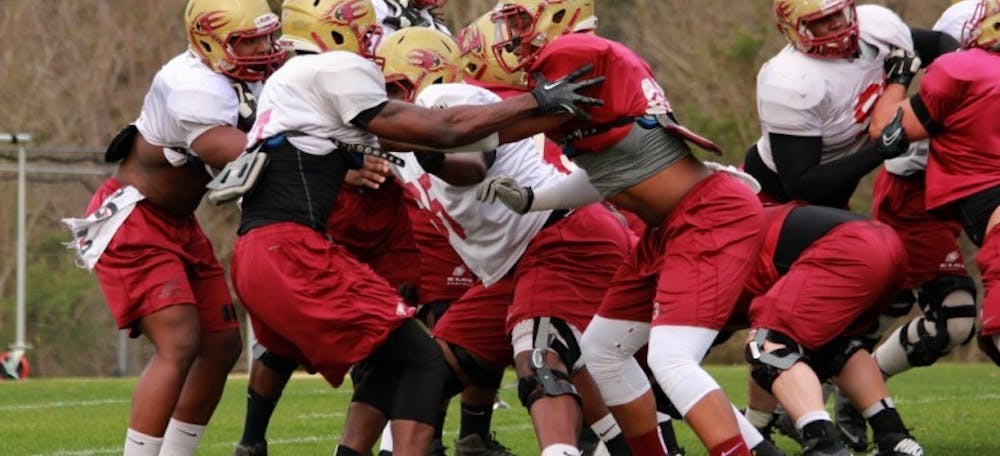Country singer Kenny Chesney was not the first to refer to football players as “the boys of fall.”
After all, the sport has been played from September-December for generations. Yet the NCAA-conceived concept of spring football has become a bigger and bigger deal in recent years. Saturday afternoons in April on ESPN are now loaded up with the same thing that ESPN airs on Saturday afternoons in October: college football.
The biggest difference between the real season and this fake season is obvious in that the “games” are against members of your own team. In other sports such as soccer and softball, teams are permitted to scrimmage other schools in their offseason practice periods, but football does not get the same privilege. To top it off, football teams practice for up to three weeks and get a single spring game.
The attendance figures for these glorified scrimmages are gaudy. According to SB Nation, 73,506 fans packed the University of Alabama’s Bryant-Denny Stadium April 19. Pennsylvania State University and Auburn University also eclipsed the 70,000-fan mark for their spring games.
It can be argued that spring practice is not effective because the players are not in a routine of “practice all week, play on Saturday.” Another extreme is the argument that “jobs are won and lost in the spring.”
The truth of the matter is that spring football is somewhere in between. College coaches learn about their team and evaluate players during spring ball, but rarely do teams establish their fall roster based solely upon what happens the spring before. Even if a player has a bad spring, they have the chance to fight their way back in fall camp. Incoming freshmen arrive in August and compete for jobs. Spring football is not “do or die.”
Fans and the media should not overhype success stories in spring ball, especially those on offense. As pointed out by Elon University head coach Rich Skrosky following his team’s spring game, the lengthy spring session allows defenses to figure out their own team’s offense. Spring ball gives defense an upper hand that they do not enjoy come fall when they are facing unfamiliar offenses.
The debate does not end with colleges. In states across the country, controversy is raging over whether or not high school football should adopt a similar spring season. Sixteen states have adopted a spring football policy. In Florida, teams may practice for 20 days in the spring, five more than even the NCAA. Ohio, one of the nation’s most tradition-rich high school football states, is debating whether or not to permit the practices.
Whether you are a football nut or a casual fan, spring football is now impossible to ignore. The media coverage is at an all-time high, and it has become a cash cow for both television networks and gate receipts.
Even if spring football is overhyped, it serves its subtle purpose: to remind you just how much you love football and how excited you are that the season is only a few short months away.


